AKHET KHUFU
Akhet Khufu – « The Horizon of Khufu » – is the name the ancient Egyptians had given to the Great Pyramid of Giza.
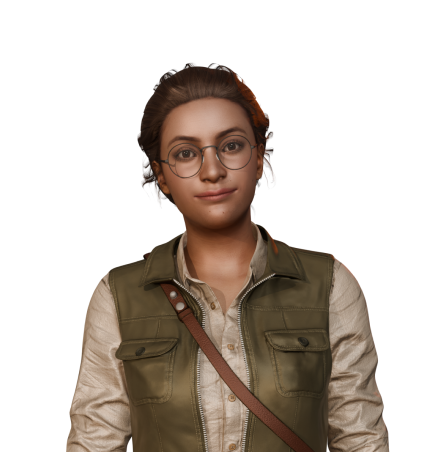
MONA
Your guide’s first name Mona is an anagram of « Amon, » one of the main gods of the Egyptian pantheon.
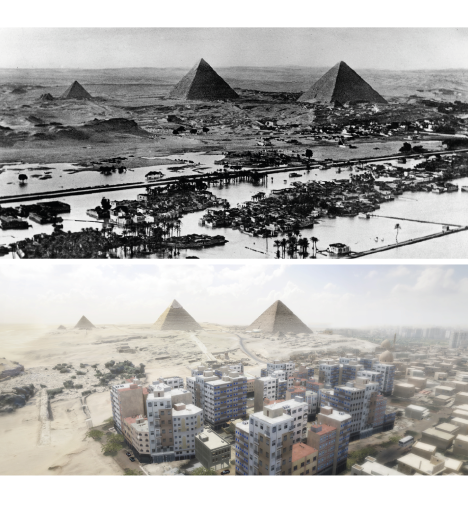
THE NILE
In Khufu’s time, the Nile flowed not far from the Giza plateau, and its annual floods inundated the region. Over the centuries, its bed has shifted some 8 km to the east and now flows through the center of modern Cairo city.
In the 1960s, a large dam was built in the south of the country, at Aswan, and the Nile no longer floods the area around the necropolis.
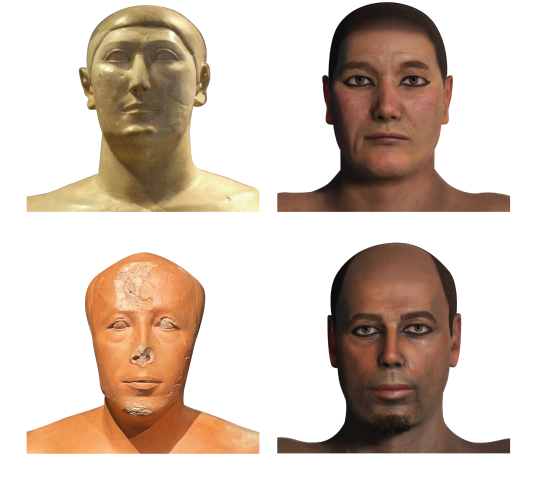
ANKH HAF & HEMIUNU
The characters of Ankh Haf (Vizier and half-brother of King Khufu, supervisor of the necropolis) and Hemiunu (architect of the Great Pyramid of Giza) were created from busts found in their respective tombs.
These highly realistic busts testify to the incredible mastery of the craftsmen of that time.
THE PYRAMID
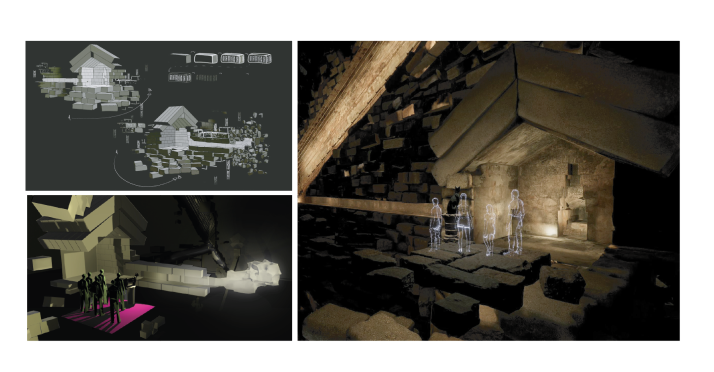
One of the most complicated areas to design was the pathway in the heart of the pyramid. With its representation, we wanted to avoid the impression that Khufu’s pyramid is « full of emptiness »!
Thanks to virtual reality, you can travel through some 2.5 million cubic meters of stone blocks and enjoy unprecedented views of the tomb’s remarkable and unique architecture.
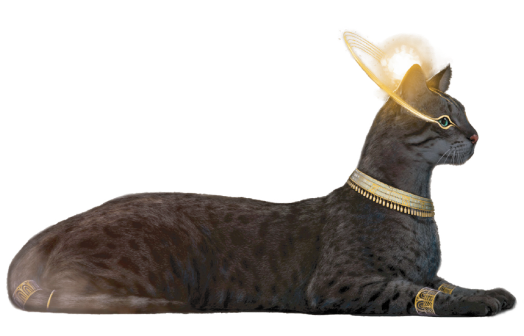
BASTET
The cult of Bastet was already fervent in the Nile delta during Khufu’s time. The column on which she stands before speaking is papyriform, i.e., shaped like a papyrus flower. It is directly inspired by those in the Sahure necropolis at Abousir.
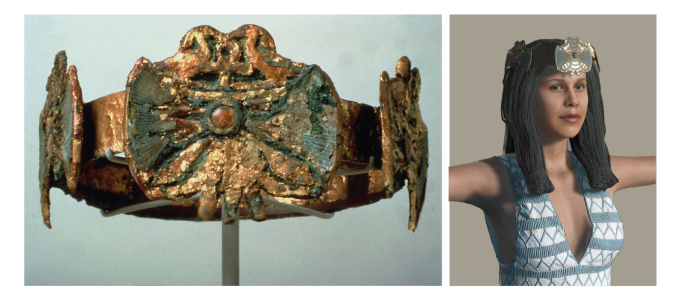
JEWERLY
During your trip to ancient Egypt, you may have participated in the preparation of the funeral. The royal figures wear finery and jewelry that have been reconstructed thanks to objects found in the tomb of Queen Hetepheres, Khufu’s mother.
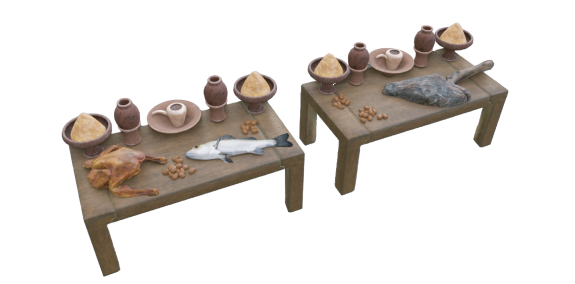
OFFERINGS
In the beliefs of the ancient Egyptians, it was fundamental to ensure that the deceased had access to their favorite meals in the afterlife. The offering tables in temples are filled with dishes described in the bas-reliefs found in the Giza tombs.
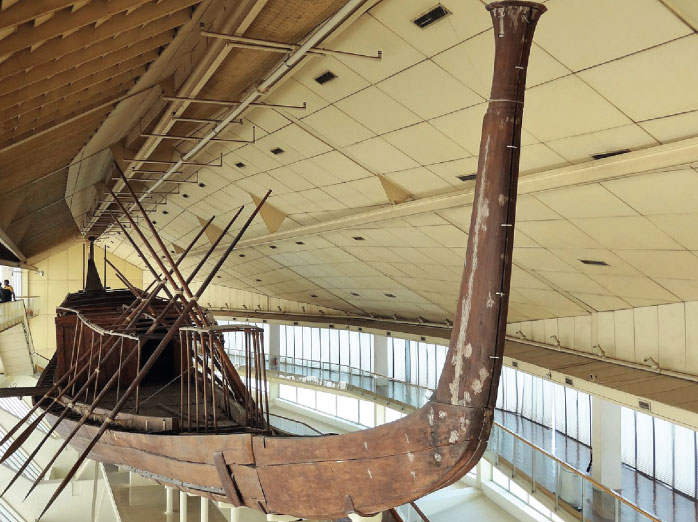
THE BOAT
The great « solar boat » on which you sailed really exists! Discovered in 1954 at the foot of Khufu’s Pyramid, it was exhibited in its own museum until 2021. The ship has just been moved nearby to the new Great Egyptian Museum.
AKHET KHUFU
Akhet Khufu – « The Horizon of Khufu » – is the name the ancient Egyptians had given to the Great Pyramid of Giza.
THE NILE
In Khufu’s time, the Nile flowed not far from the Giza plateau, and its annual floods inundated the region. Over the centuries, its bed has shifted some 8 km to the east and now flows through the center of modern Cairo city.
In the 1960s, a large dam was built in the south of the country, at Aswan, and the Nile no longer floods the area around the necropolis.

THE PYRAMID
One of the most complicated areas to design was the pathway in the heart of the pyramid. With its representation, we wanted to avoid the impression that Khufu’s pyramid is « full of emptiness »!
Thanks to virtual reality, you can travel through some 2.5 million cubic meters of stone blocks and enjoy unprecedented views of the tomb’s remarkable and unique architecture.

MONA
Your guide’s first name Mona is an anagram of « Amon, » one of the main gods of the Egyptian pantheon.

ANKH HAF & HEMIUNU
The characters of Ankh Haf (Vizier and half-brother of King Khufu, supervisor of the necropolis) and Hemiunu (architect of the Great Pyramid of Giza) were created from busts found in their respective tombs.
These highly realistic busts testify to the incredible mastery of the craftsmen of that time.

BASTET
The cult of Bastet was already fervent in the Nile delta during Khufu’s time. The column on which she stands before speaking is papyriform, i.e., shaped like a papyrus flower. It is directly inspired by those in the Sahure necropolis at Abousir.

JEWERLY
During your trip to ancient Egypt, you may have participated in the preparation of the funeral. The royal figures wear finery and jewelry that have been reconstructed thanks to objects found in the tomb of Queen Hetepheres, Khufu’s mother.

THE BOAT
The great « solar boat » on which you sailed really exists! Discovered in 1954 at the foot of Khufu’s Pyramid, it was exhibited in its own museum until 2021. The ship has just been moved nearby to the new Great Egyptian Museum.

OFFERINGS
In the beliefs of the ancient Egyptians, it was fundamental to ensure that the deceased had access to their favorite meals in the afterlife. The offering tables in temples are filled with dishes described in the bas-reliefs found in the Giza tombs.
